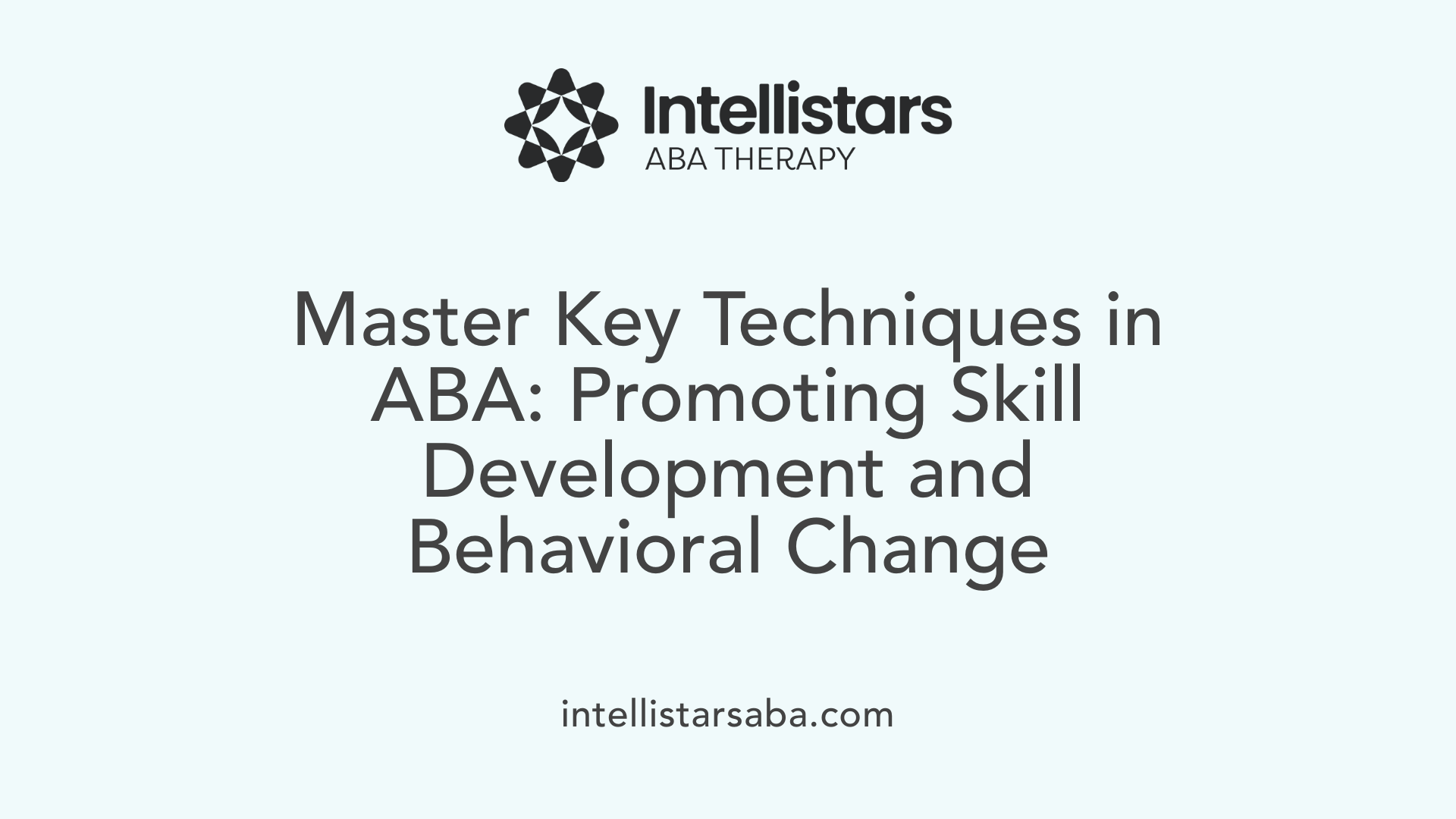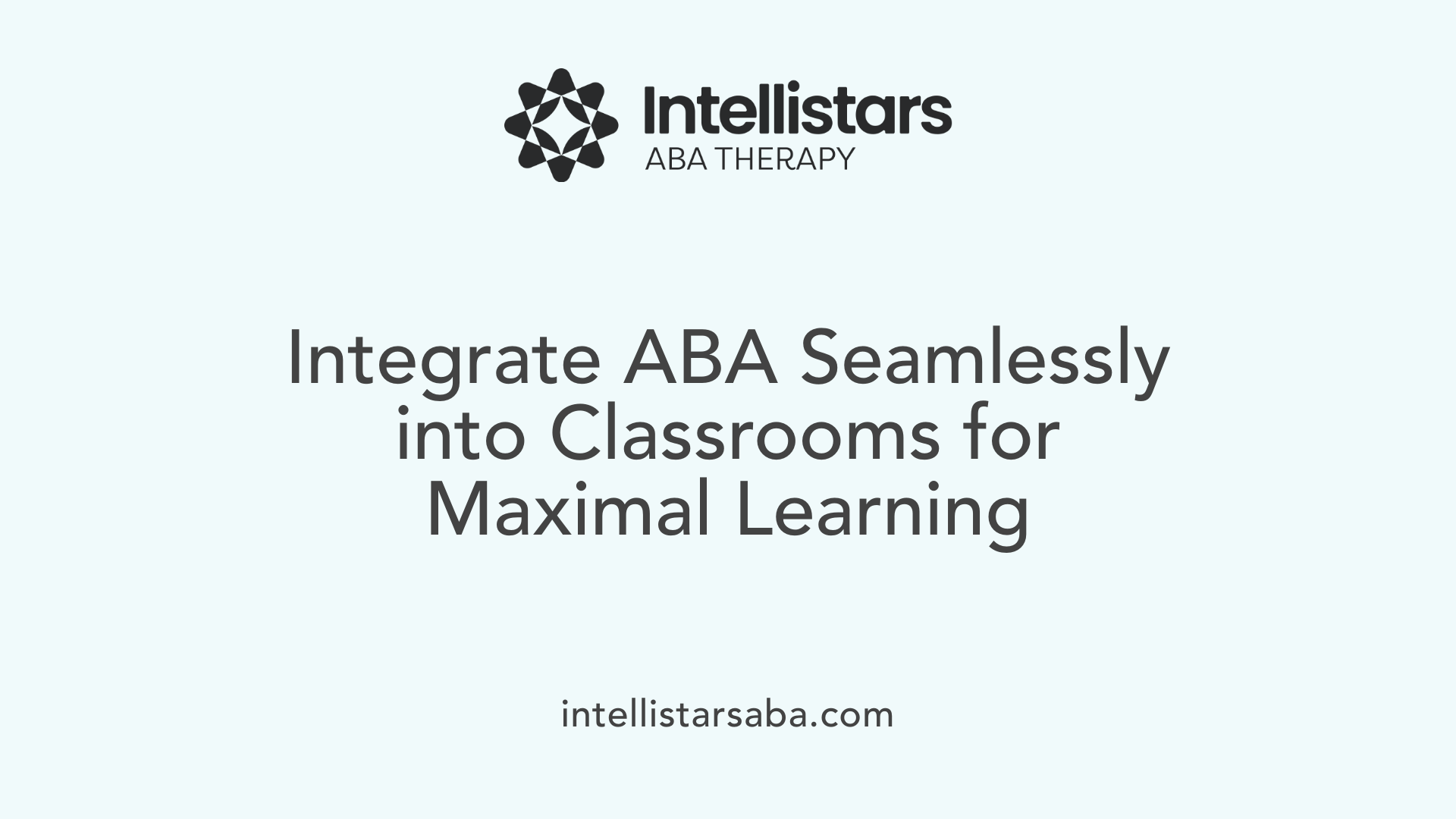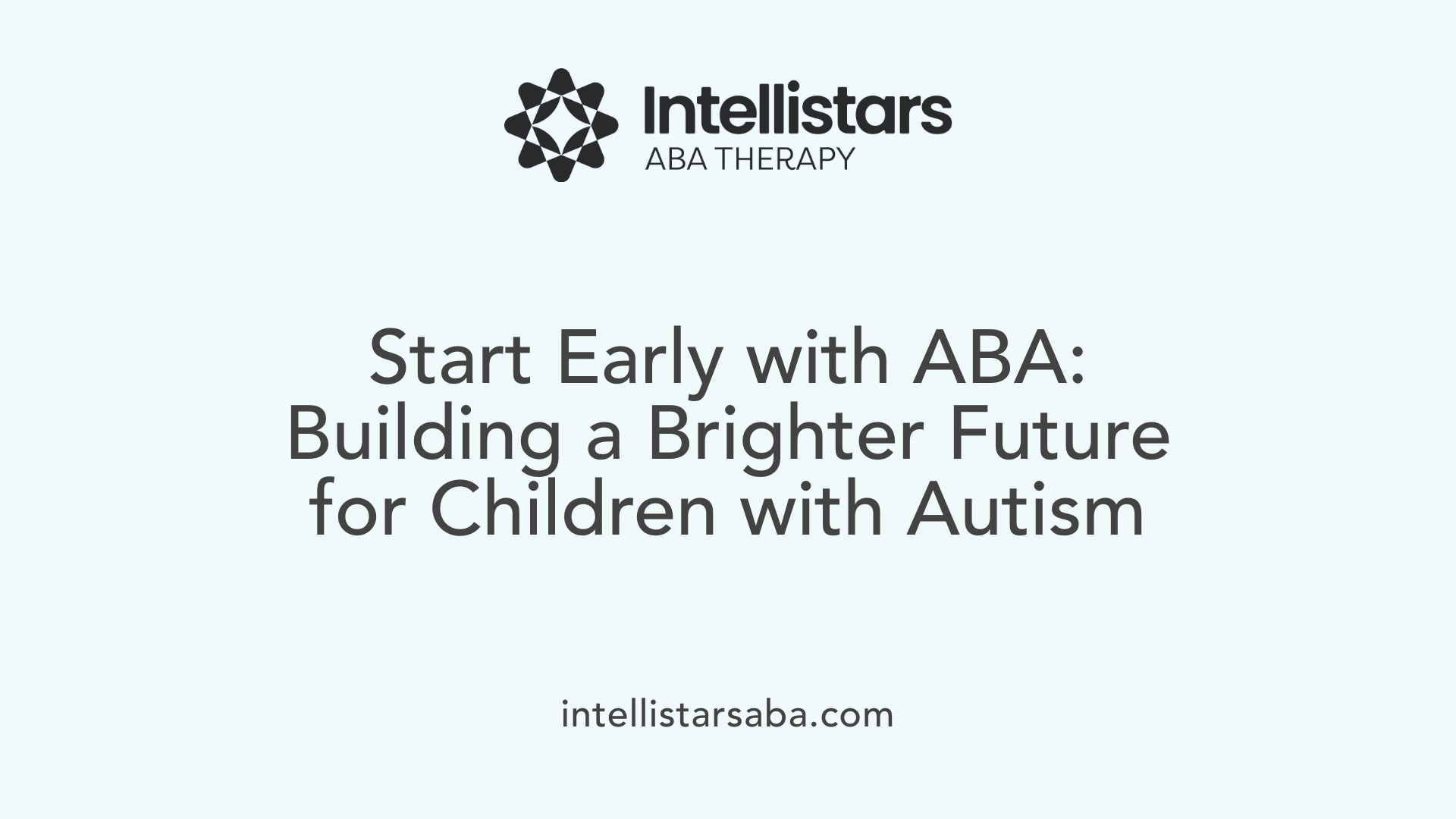Understanding ABA Therapy and Its Impact on Learning
Applied Behavior Analysis (ABA) therapy is a scientifically validated approach that plays a pivotal role in supporting the development of children with autism spectrum disorder (ASD). Its core focus is on improving social, communication, and daily living skills by utilizing methods rooted in behavioral science. The adaptability of ABA allows it to be implemented across various settings, including homes, clinics, and educational institutions, making it a versatile tool for fostering adaptive learning and facilitating meaningful developmental gains.
Core Principles and Techniques of ABA Therapy

What mechanisms, techniques, and principles of ABA facilitate skill development and adaptive behaviors?
Applied Behavior Analysis (ABA) is built on core principles like reinforcement and behavior analysis. It uses scientifically proven methods to encourage positive behaviors and reduce problematic ones.
One of the fundamental techniques is positive reinforcement, where children earn rewards for demonstrating wanted behaviors, motivating them to repeat these actions. For example, praising a child for sharing toys or using a specific word can strengthen the likelihood of these behaviors occurring again.
Prompting and prompt fading involve providing hints or assistance to guide the child toward the correct response and then gradually reducing these prompts. This helps children gain independence in tasks like dressing or communication.
Role-play and modeling are also prevalent in ABA. Children observe and imitate acceptable behaviors through demonstrations, which can include social interactions or everyday routines.
Task analysis breaks complex skills into small, manageable steps, making learning more accessible. For instance, brushing teeth might be broken down into steps like picking up the toothbrush, applying toothpaste, and brushing.
Each child's ABA program is personalized, based on thorough assessments of their individual needs and preferences. This customization ensures that interventions target specific skills and behaviors, optimizing progress.
Through continuous assessment and data collection, therapists adjust techniques to stay aligned with each child's evolving developmental profile. Collectively, these mechanisms and principles lay a structured foundation for effective skill development and behavioral change in children with autism.
Implementing ABA in Educational Settings

How can ABA be integrated into classroom settings to promote learning?
Integrating Applied Behavior Analysis (ABA) into classrooms involves several systematic steps. First, educators and behavior specialists conduct comprehensive assessments to understand each child's unique needs, skills, and behavioral challenges. Based on this information, specific, measurable goals are established that target areas such as communication, social skills, and daily routines.
Once goals are set, structured interventions are implemented. These interventions often include techniques like Discrete Trial Training (DTT), natural environment teaching, and the use of visual supports and reinforcement strategies. Regular measurement of progress is critical; teachers use observation, standardized assessments, and data collection during activities to evaluate effectiveness.
To ensure successful adoption, teachers and staff receive specialized training on ABA principles. This training equips them to implement consistent strategies, modify interventions as needed, and reinforce positive behaviors effectively.
Collaboration plays a vital role in classroom integration. Interdisciplinary teams—including behavior analysts, speech therapists, and special education staff—work together to plan and adjust interventions. Additionally, involving families through ongoing communication and shared strategies ensures consistency across home and school environments.
Peer-mediated instruction and social skills training are often incorporated to foster social interactions among students. Visual supports and the environment itself are modified to be more supportive and accommodating.
Overall, a collaborative, data-driven, and personalized approach enables children with ASD to thrive academically and socially within their classroom settings while fostering their independence and adaptive skills.
Monitoring and Measuring Progress in ABA Programs

How does progress monitoring support ABA therapy outcomes?
Progress monitoring is a fundamental part of effective ABA therapy. It involves systematic data collection through various methods such as direct observations, standardized assessments, and regular team review meetings. These tools help professionals track each child's development in key areas like communication, social skills, and adaptive behaviors.
By continuously reviewing this data, therapists and educators can evaluate whether the current interventions are working or if modifications are needed. This ongoing process allows for timely adjustments, ensuring that goals are realistic and aligned with the child's evolving needs.
The role of data in evaluating intervention effectiveness cannot be overstated. It provides an objective basis for decision-making, reducing guesswork and increasing the likelihood of positive outcomes. When interventions are tailored based on accurate progress measurements, children are more likely to acquire skills efficiently, leading to improved independence and social participation.
Overall, diligent progress monitoring strengthens the entire ABA process, supports personalized treatment plans, and fosters better developmental gains for children with autism.
Early Intervention and Its Long-Term Benefits

How does early ABA intervention facilitate development?
Starting ABA therapy before the age of four plays a crucial role in shaping a child's developmental trajectory. This early approach focuses on building essential skills such as communication, social interaction, and adaptive behaviors.
Early ABA intervention involves systematic assessment, goal-setting, and tailored strategies like positive reinforcement and task analysis to teach children new skills effectively. It also helps identify and reduce challenging behaviors by addressing their triggers and teaching appropriate alternative actions.
Research indicates that children who receive early ABA therapy tend to develop better language abilities, social skills, and independence. These improvements not only support academic readiness but also foster emotional well-being.
Moreover, early intervention reduces the need for future intensive support. It sets a strong foundation, enabling children to participate more fully in educational settings and daily activities. This proactive approach increases the likelihood of long-term success and helps children navigate their environments more confidently.
By addressing developmental delays promptly, early ABA therapy maximizes the child's potential for independence and quality of life, making it a vital component of autism support strategies.
The Evolving Landscape of ABA: Technology and Future Directions
What are the future directions in ABA therapy?
The future of Applied Behavior Analysis (ABA) promises exciting advancements driven by technology. Researchers and clinicians are exploring the integration of artificial intelligence (AI), virtual reality (VR), augmented reality (AR), wearable devices, and telehealth services. These innovations aim to tailor interventions more precisely and make therapies more accessible.
AI can analyze massive amounts of data quickly, helping to customize treatment plans to fit each child's unique needs. VR and AR create immersive environments for social skills training and daily life simulations, making learning engaging and practical.
Wearable devices, such as smart watches or biosensors, can monitor physiological responses and behaviors in real-time, providing immediate feedback to both children and therapists. Telehealth expands access to ABA services, especially for families in remote or underserved areas, facilitating therapy sessions via secure online platforms.
These technological advances support personalized learning and social skills development by offering immediate, data-driven adjustments to interventions. As research continues, these tools help enhance the effectiveness of ABA therapy while reducing barriers to access.
The future landscape of ABA will also involve policy updates, promoting inclusive practices across educational and therapeutic settings. Combining innovative technology with traditional methods ensures that ABA remains adaptable and effective for diverse populations.
| Technology Type | Potential Benefit | Example Application |
|---|---|---|
| AI | Personalized intervention plans | Adaptive algorithms for behavior analysis |
| VR/AR | Engaging social skills scenarios | Virtual social environments for practice |
| Wearable Devices | Real-time behavior monitoring | Smartwatches tracking engagement |
| Telehealth | Expanding access | Online therapy sessions |
As the field evolves, continuous research and policy support will shape how these tools are integrated into standard practice, fostering a more inclusive and effective future for ABA therapy.
More information
To explore further, search for "future of ABA therapy technology innovations" to find recent studies and developments shaping this exciting future.
Family and Community Engagement in ABA Therapy
How do family and educator partnerships support ABA outcomes?
Family and educator collaborations are essential for maximizing the benefits of ABA therapy. When parents and teachers work together, they create a consistent environment where behaviors and skills are reinforced across different settings.
Training families on ABA principles and techniques empowers them to support their child's progress at home. This includes strategies such as implementing reinforcement schedules, following structured routines, and applying behavior modification techniques.
Partnerships with schools ensure that interventions are aligned with classroom activities, supporting generalization of skills and reducing behavioral setbacks. Regular communication, joint goal-setting, and shared observation help maintain a unified approach.
Community involvement further enhances these efforts by providing additional resources and support networks. This collective approach fosters a nurturing environment, contributing to better social, communicative, and adaptive skills development for children with ASD.
Strategies for promoting consistent application of ABA techniques at home
- Parent training sessions on ABA methods
- Clear and simple routines for daily activities
- Use of visual supports and reinforcement tools
- Consistent data collection and progress review
- Positive reinforcement for desired behaviors
Role of community and educational partnerships
- Collaboration between therapists, teachers, and families
- Sharing resources and best practices
- Implementing school-wide inclusive practices
- Facilitating social integration through community programs
Ongoing family involvement paired with strong community and school partnerships are foundational to the successful application of ABA therapy, leading to sustained improvements and a more inclusive experience for children with autism.
| Aspect | Description | Practical Examples |
|---|---|---|
| Family training | Equipping families with ABA skills | Workshops, home coaching |
| Consistent routines | Applying uniform strategies | Visual schedules, reinforcement |
| School collaboration | Coordinated intervention plans | IEP meetings, bilingual teams |
| Community resources | Support networks and programs | Autism support groups, community centers |
Promoting Adaptive Skills through ABA
How does ABA support adaptive learning and skills development?
Applied Behavior Analysis (ABA) is highly effective in helping children with autism develop essential adaptive skills. It approaches skill acquisition systematically by breaking down complex tasks into small, manageable steps. Using visual aids, prompts, and reinforcement, ABA teaches routines such as hygiene, grooming, and domestic chores.
For younger children, ABA focuses on foundational daily living activities—helping them learn to brush their teeth, dress, or tidy up after themselves. These skills are reinforced through rewards, encouraging children to repeat and master behaviors.
As children grow older, ABA expands its scope to include punctuality, job skills, and greater independence. For instance, teens may learn to manage their schedules, prepare simple meals, or handle personal finances via structured lessons with visual supports.
Throughout the process, continuous assessment plays a vital role. It helps therapists tailor interventions to each child's needs and ensure that skills are generalized across different settings like home, school, and community. The goal is to foster autonomy, boost confidence, and prepare children for daily life challenges.
Research Evidence and Outcomes of ABA Therapy
What evidence supports the effectiveness of ABA in achieving developmental and educational goals?
Extensive research consistently demonstrates that ABA therapy significantly benefits children with autism. Controlled clinical trials and meta-analyses have shown noteworthy improvements in essential areas such as communication, social interaction, and adaptive skills. One prominent study found that children undergoing ABA interventions exhibited measurable gains in language development and social engagement, often surpassing those in control groups.
These findings are reinforced by statistical analyses, such as multivariate covariance (MANCOVA), revealing statistically significant differences between children receiving ABA and those who do not. Such evidence underscores ABA's role in not only reducing problematic behaviors like aggression or self-injury but also in promoting meaningful developmental progress.
Research supports the idea that early, intensive ABA programs—sometimes exceeding 20 hours per week—can lead to substantial improvements in daily living skills, academic readiness, and independence. These outcomes translate into enhanced quality of life for children and their families, fostering greater inclusion in educational settings and community life.
How do these research findings influence current practices?
The strong evidence base encourages widespread adoption of ABA strategies in schools and therapy centers. It also guides professionals in designing personalized, goal-oriented interventions that adapt to each child's unique needs. Regular data collection and progress monitoring, backed by research, ensure interventions remain effective, driving continuous improvements and better long-term results.
Building a Brighter Future for Children with Autism
ABA therapy serves as a powerful, flexible, and evidence-based intervention that profoundly supports children with autism in developing essential skills for daily life, social engagement, and academic success. Its effectiveness is amplified when combined with other therapies such as speech therapy, creating a comprehensive support system tailored to each child's needs. As technology advances and collaborative practices grow, ABA continues to evolve, promising an inclusive and innovative future. By fostering strong partnerships with families, educators, and communities, ABA paves the way for children with autism to lead more independent, fulfilling lives. Continued research, training, and policy support will further enhance the delivery and impact of ABA services, ultimately ensuring that each child has the opportunity to reach their full potential.
References
- Inclusive Education: Strategies for Implementing ABA Therapy in ...
- How ABA Therapy Supports Children with Autism
- The Benefits of ABA Therapy for Children with Autism
- ABA Therapy- How it deals with Autism and other disorders
- The effectiveness of applied behavior analysis program training on ...
- How ABA Therapy Supports Children in Schools - All Star ABA
- Combining ABA With Speech Therapy - Motivity






